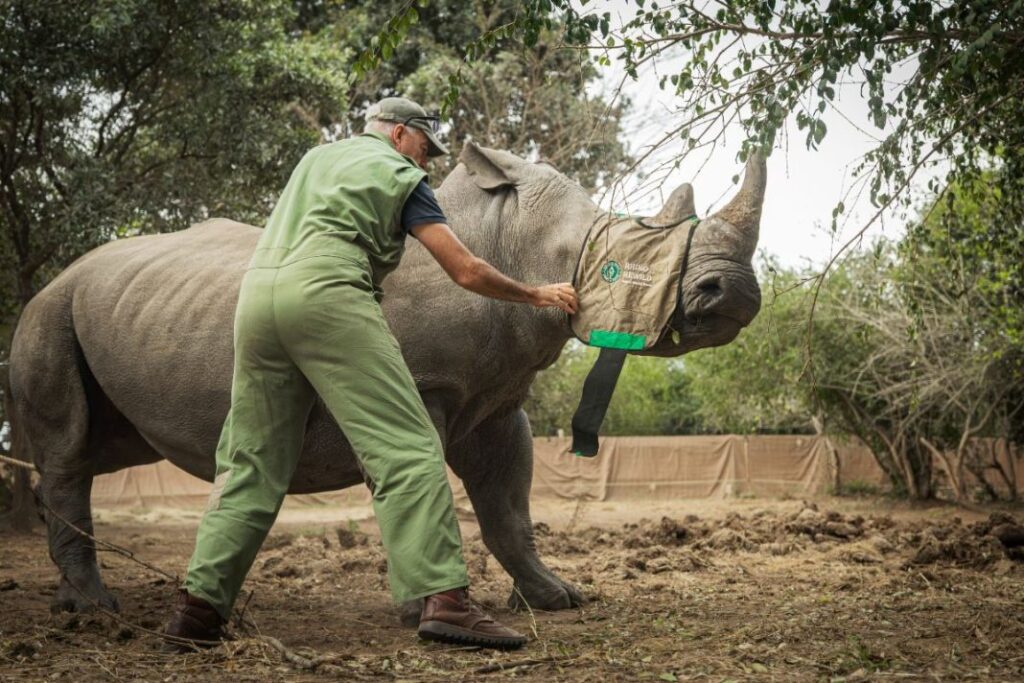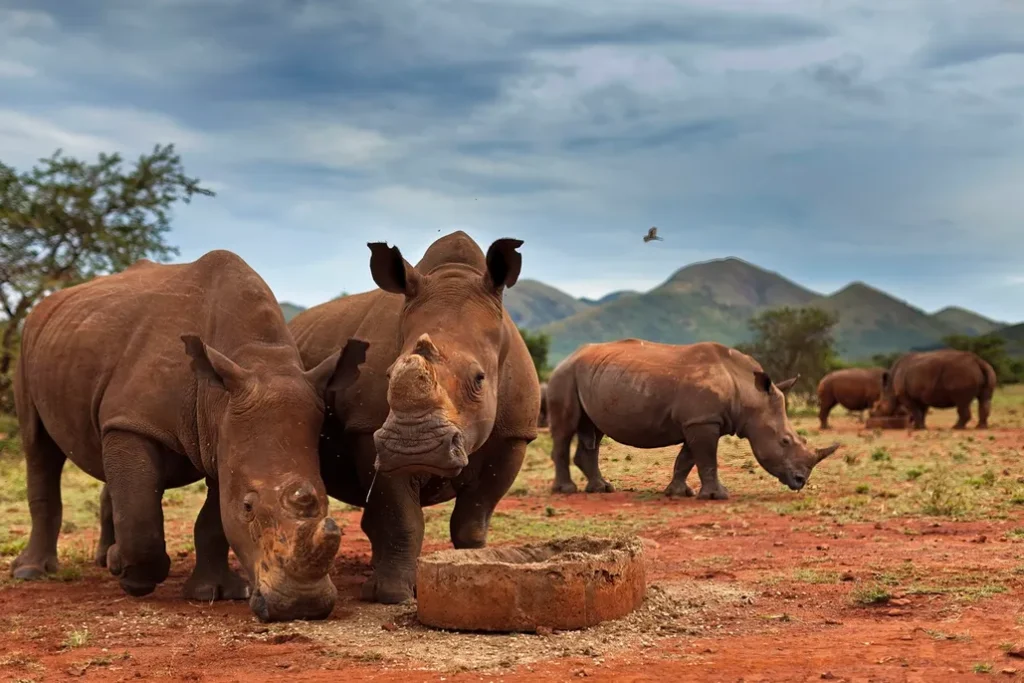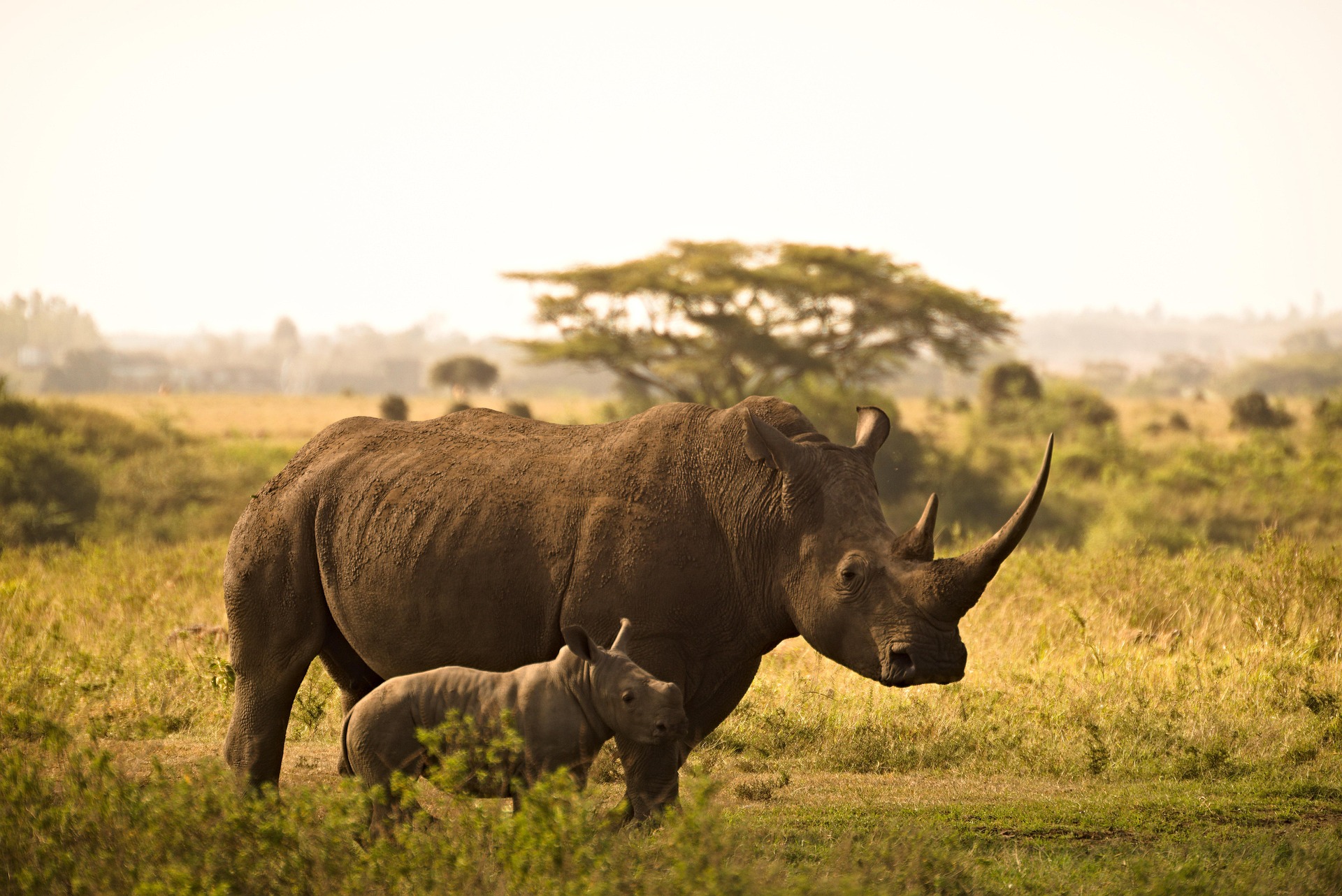What is the Rewilding 2,000 White Rhinos Initiative?
White rhino conservation-rhino translocation Africa-rewilding. In September 2023, African Parks made a bold move by purchasing the “Platinum Rhino” breeding operation in North West Province, South Africa. This facility owned over 2,000 southern white rhinos, which represent nearly 15% of the world’s remaining southern white rhino population.
The clear objective : over the next ten years, these rhinos are to be rescued from captivity, phased out of the breeding operation, and rewilded—that is, translocated into secure, well-managed protected areas across Africa.
This isn’t just about numbers. It’s about establishing or strengthening strategic populations in the wild, ensuring genetic diversity, enabling natural ecological functions (like grazing and nutrient cycling), and pulling ecosystems toward greater health.

Why It’s Historic & Important
- Scale: Rewilding 2,000 rhinos is unprecedented for a project of this type. It’s one of the largest single commitments to moving a megafauna species from captivity back into the wild.
- Risk Mitigation: The Platinum Rhino facility was under financial stress and had been put up for auction. Without intervention, there was a serious risk that the rhinos would be broken up, sold off, or otherwise lost to effective conservation. African Parks’ intervention prevented that fragmentation.
- Representation: Because these rhinos represent 15% of the global southern white rhino population, this initiative has strong leverage in conserving the subspecies. It’s a major boost for southern white rhino numbers overall.
What’s Happening Already: Key Progress & Translocations
A lot of movement has already started under this initiative:
In May 2024, conservationists moved 40 rhinos to Munywana Conservancy in South Africa. Later, they relocated southern white rhinos to Dinokeng Game Reserve in South Africa. In June 2025, teams transported 70 southern white rhinos from South Africa to Akagera National Park in Rwanda under the Rhino Rewild Initiative. By late 2024, conservationists had rewilded 376 rhinos from the captive population: 216 entered protected areas, and 160 entered staging areas prepared for them. So far, 33 calves have been born in the wild, showing the project restores viable populations, not just relocates animals.
Challenges & Considerations
While the initiative is promising, it faces several big challenges:
- Habitat & Security: Finding protected areas that meet all criteria (size, security from poaching, suitable habitat, veterinary infrastructure) is not trivial. Every release site must be “rhino-ready”.
- Poaching Risk: Even in protected areas, poaching remains a serious threat. Ensuring strong anti-poaching measures, along with support from governments and local communities, is crucial.
- Genetic Diversity: Because many rhinos come from a single large captive operation, managing inbreeding, ensuring diverse breeding lines, and restoring genetic health are priorities.
- Disease & Stage Release: Some rhinos are first placed in “staging reserves” to build immunity to local diseases, acclimatise, and undergo veterinary checks before full release.
- Funding & Long-Term Support: The initiative depends heavily on donor funding, government support, and ongoing costs for security, veterinary care, habitat management, and community partnerships.

What This Means for Conservation & Africa
- Ecosystem Restoration: Rhinos are mega-herbivores; their presence helps shape landscapes (through grazing, seed dispersal, and nutrient cycling). Reintroducing them can help restore degraded ecosystems.
- Tourism & Local Economies: Rhinos are a major draw in wildlife tourism. Restoring populations can boost ecotourism, which in turn supports local communities and conservation funding.
- Species Security: By spreading rhinos across multiple safe sites and countries, the risk that a single disaster (like a disease outbreak or a major poaching incident) could wipe out a large share of the population is reduced.
Looking Ahead: What to Expect
Over the next few years, the initiative plans to move about 300 rhinos annually to new areas. We’ll see more cross-border translocations and likely new partner countries stepping up to host populations. The goal is not just survival but thriving: visible reproduction, healthy social structures, and long-term ecosystem contribution.
How Travellers/Conservers Can Support & Participate
- Visit protected areas where rhinos are being rewilded—tourism dollars help fund protection and community benefit.
- Support or donate to reputable organisations engaged in rhino conservation (including African Parks’ Rhino Rewild initiative).
- Spread awareness—rhino conservation faces misinformation and apathy; informed voices help.
- Encourage policy support in host countries for strict anti-poaching enforcement and land protection.
